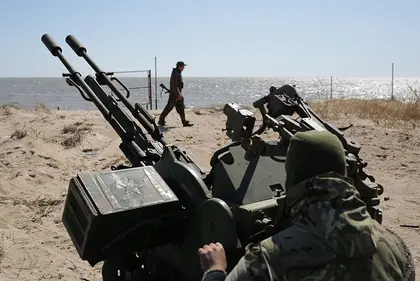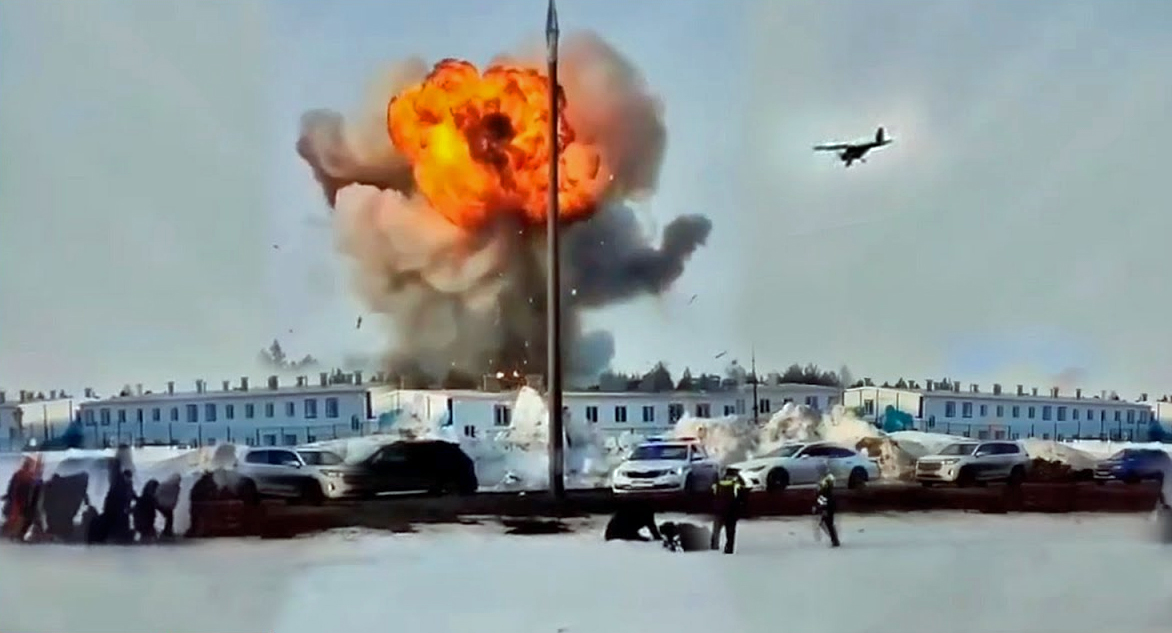Shyrokyne, a key step for Russian forces to capture the Azov Sea port city of Mariupol only 10 kilometers to the west, has been all but obliterated in heavy fighting during the last two months.
A visit to the area on April 16 revealed an eerie ghost town littered with debris and shrapnel, home after home destroyed by shelling. Remaining residents of the village complained of shelling on an almost daily basis. But on the visit, only the sound of animals crying for food could be heard. Many of the pets were abandoned by owners who fled for their lives.
JOIN US ON TELEGRAM
Follow our coverage of the war on the @Kyivpost_official.
Out of 1,000 residents, only about 34 remain – many of them elderly and unable to leave. They all live in homes that have lost ceilings or walls to shelling. Many of them stay in their basements for fear of further attacks.
“Where would I go?” said an elderly woman named Darya, who was too afraid to give her surname. “I can’t leave my home. My mother and father are buried in the cemetery here. I won’t leave them.”
Ivan Kudryavsky, another elderly resident who decided to stay put, said the situation was only peaceful while international monitors were present, a fact confirmed by the deputy chief of the Organisation for Security and Co-operation in Europe’s special monitoring mission in Ukraine.
At least six Ukrainian soldiers were killed in the last week and roughly 100 since the Feb. 15 cease-fire.
Alexander Hug, the OSCE mission’s deputy chief, told the Kyiv Post that monitors had begun to conduct daily foot patrols in the area in the hope that their presence would deter further fighting.
Hug noted that on the previous day, fighting resumed less than an hour after monitors drove away.
“We believe it was the Ukrainian side that started it,” he said, while noting that both sides are guilty of violating the Feb. 15 cease-fire agreed to by Russia, Ukraine, Germany and France.
On the other side of town, members of the pro-Ukrainian Donbass Battalion painted a grim picture, saying they were shot at on a daily basis by Russian forces and their proxies. They said they were helpless to do anything to defend themselves.
“We’re adhering to the cease-fire, but the separatists shoot at us regularly. Every single day. We shoot back only when we’re given permission to,” said a Donbass commander who goes by the nickname Tikhy, or “Quiet.”
“Kyiv’s political desire is to resolve the problem peacefully, but we’re dealing with illegal armed groups. That’s impossible,” he said, refusing to give his name.
Sergei Trety, another Donbass Battalion commander who’d been in Shyrokyne for the past two months, said the other side “fired on us for 20 straight hours and we were calling in to ask for permission to fire back and couldn’t get it. Then, they finally gave us the go-ahead when the separatists had already stopped firing.”
Russian-backed insurgents who control part of the town placed the blame squarely on the Ukrainian side, showing off what they said were cluster bombs to international observers on April 16.
But fears of a return to full-scaled fighting in the year-long war that has claimed more than 6,000 lives were deepened by words of their Donetsk-based commander, Alexander Zakharchenko.
In the Bloomberg interview published April 16, a Kremlin-backed separatist leader revealed his intentions were to capture Mariupol in violation of ceasefire agreements, and unite with Russia. He put chances of a return to war at “90 percent.” And in claiming that “nobody wants to come back to Ukraine under any pretext,” he wrote off the Minsk II agreements that he and the leader of Luhansk-based separatists had signed just two months earlier, according to the Bloomberg interview. Those agreements envisioned Ukraine’s gradually re-integrating politically and economically with Ukraine.
Boasting that he now had some 23,000 regular troops and 30,000 in reserves, Zakharchenko pledged to launch an offensive on Mariupol.
“We will liberate all our compatriots. It’s easy to outflank it and they will surrender. Don’t forget, our mothers and our sisters live there, so don’t make us out to be bloodthirsty beasts,” he said.
“We thought, still think and will think of ourselves as a part of the Soviet Union, of Russia,” he added.
Those words came as the OSCE managed to broker talks between Ukrainian and Russian generals on April 15 to come up with a disengagement plan. Not surprisingly, none of Shyrokyne’s remaining residents seemed to be holding their breath.
“This will continue for at least 10 years!” a resident named Viktor shouted. Like others in the besieged town, he refused to give his full name in fear of what he described as Russian forces in control of much of the town.
The fighters themselves appeared just as disillusioned with the peace process as the shell-shocked residents of Shyrokyne.
“This isn’t going to end anytime soon,” said Trety. “It will turn into a frozen conflict, just like in Transnistria,” the breakaway republic of Moldova, “because that’s more beneficial to Russia.”
Kudryavsky said he had just about given up on expecting outside help.
“I don’t even need water, you know? It’s raining today. I’ll just collect it in a bucket,” he said.
Kyiv Post staff writer Allison Quinn can be reached at a.caseyquinn@gmail.com. Editor’s Note: This article has been produced with support from www.mymedia.org.ua, funded by the Ministry f Foreign Affairs of Denmark and implemented by a joint venture between NIRAS and BBC Media Action.
You can also highlight the text and press Ctrl + Enter




